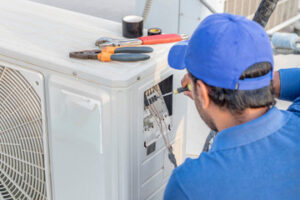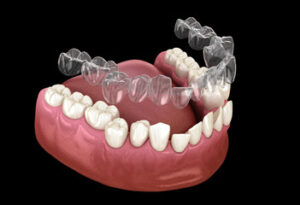HVAC Round Rock systems play a crucial role in maintaining comfort and air quality in residential and commercial spaces. Heating, ventilation, and air conditioning systems are designed to regulate temperature, control humidity, and improve air circulation, creating a comfortable and healthy indoor environment. The need for efficient climate control has become increasingly important as weather patterns become more unpredictable and energy costs continue to rise. HVAC systems provide a solution by offering consistent and reliable temperature control while enhancing air quality and energy efficiency.

The primary function of an HVAC system is to create and maintain a comfortable indoor climate regardless of external weather conditions. Heating systems provide warmth during colder months by generating and distributing heat throughout the building, often using a furnace or heat pump. Ventilation systems ensure a steady supply of fresh air by exchanging indoor and outdoor air, removing pollutants, and controlling humidity levels. Air conditioning systems work to cool indoor spaces by extracting heat and moisture from the air, creating a comfortable and refreshing environment during warmer seasons. These three components work together to create a balanced and controlled indoor climate, ensuring that occupants remain comfortable year-round.
One of the key benefits of a well-designed HVAC system is improved air quality. Poor indoor air quality can result from a buildup of dust, allergens, mold, and other contaminants, leading to respiratory problems and other health issues. HVAC systems are equipped with filters and air purifiers that capture and remove airborne particles, ensuring that the air circulated within the building is clean and healthy. Proper ventilation also helps prevent the accumulation of harmful gases such as carbon monoxide and radon, further contributing to a safer indoor environment. Regular maintenance of HVAC systems, including filter replacement and duct cleaning, is essential to ensure optimal air quality and system performance.
Energy efficiency is another significant advantage of modern HVAC systems. Advanced technology and improved system design have led to higher efficiency levels, reducing energy consumption and lowering utility costs. High-efficiency heating and cooling systems use less energy to maintain the desired temperature, resulting in significant cost savings over time. Programmable thermostats and smart controls allow users to adjust temperature settings based on their schedule and preferences, optimizing energy use and minimizing waste. Zoning systems enable users to control the temperature in different areas of the building independently, further enhancing efficiency and comfort. The use of energy-efficient HVAC systems also contributes to environmental sustainability by reducing the overall demand for fossil fuels and lowering greenhouse gas emissions.
The installation process for HVAC systems requires careful planning and professional expertise. Factors such as building size, insulation, and climate conditions must be considered to determine the appropriate system size and configuration. Oversized or undersized systems can lead to inefficient operation, increased energy costs, and uneven temperature distribution. Professional HVAC technicians assess the specific needs of the building and recommend the most suitable system to ensure optimal performance and efficiency. Proper installation is critical to maximizing the lifespan and effectiveness of the HVAC system, preventing issues such as air leaks, poor airflow, and mechanical failures.
Maintenance and regular servicing are essential to keep HVAC systems operating at peak performance. Over time, dust and debris can accumulate in filters and ducts, reducing airflow and forcing the system to work harder to maintain the desired temperature. This increases energy consumption and shortens the lifespan of the system. Routine maintenance, including filter replacement, coil cleaning, and inspection of electrical components, helps prevent breakdowns and ensures that the system operates efficiently. HVAC technicians use diagnostic tools to identify potential issues early and address them before they lead to more significant problems. Seasonal maintenance, such as preparing the heating system before winter and the cooling system before summer, helps ensure consistent performance throughout the year.
Technological advancements have significantly improved the functionality and convenience of HVAC systems. Smart HVAC systems are equipped with advanced sensors and automated controls that adjust temperature and humidity levels based on real-time conditions. Remote access through smartphone apps allows users to monitor and adjust their HVAC settings from anywhere, providing greater control and convenience. Machine learning algorithms analyze usage patterns and environmental conditions to optimize system performance and energy efficiency automatically. These intelligent features not only improve comfort and convenience but also contribute to long-term cost savings and environmental benefits.
Indoor climate control has become more complex as modern buildings incorporate advanced insulation materials and energy-efficient designs. HVAC systems must adapt to these changes by providing precise and responsive climate control. Variable refrigerant flow (VRF) systems, for example, use advanced compressor technology to adjust the flow of refrigerant based on the specific cooling or heating needs of different areas within a building. This allows for greater flexibility and energy efficiency, particularly in multi-zone buildings. Geothermal HVAC systems use the stable temperature of the earth to provide heating and cooling, offering a renewable and highly efficient alternative to traditional systems. These innovations reflect the ongoing evolution of HVAC technology and the increasing demand for sustainable and efficient climate control solutions.
The cost of installing and maintaining an HVAC system can vary depending on factors such as system size, complexity, and local labor rates. While the initial investment may be significant, the long-term savings in energy costs and improved comfort often justify the expense. Financing options, including leasing and payment plans, make it easier for homeowners and businesses to invest in high-efficiency HVAC systems. Government incentives and rebates for energy-efficient upgrades further reduce the financial burden and encourage the adoption of advanced HVAC technology. By investing in a high-quality HVAC system, property owners can increase the value of their building and enhance overall comfort and energy efficiency.
HVAC systems also play a crucial role in supporting health and well-being. Proper temperature and humidity control help prevent the growth of mold and mildew, which can cause respiratory issues and structural damage. Air filtration systems remove allergens and pollutants, reducing the risk of asthma and allergy symptoms. Consistent ventilation helps prevent the buildup of indoor pollutants and ensures a steady supply of fresh air. These health benefits make HVAC systems an essential component of modern living, contributing to a safer and more comfortable indoor environment.
The role of HVAC systems extends beyond individual comfort to broader environmental and economic impacts. Reducing energy consumption through efficient HVAC technology helps decrease overall demand for fossil fuels, contributing to lower carbon emissions and a more sustainable energy future. Improved air quality and climate control enhance productivity and well-being in workplaces, schools, and healthcare facilities. The HVAC industry also provides significant economic opportunities, including job creation in manufacturing, installation, maintenance, and research and development. The growing demand for energy-efficient and sustainable HVAC solutions reflects the increasing recognition of the importance of climate control in modern society.
Choosing the right HVAC system requires careful consideration of factors such as building size, energy efficiency, and climate conditions. Consulting with a professional HVAC technician ensures that the system is properly sized and configured to meet the specific needs of the building. Investing in a high-quality HVAC system with advanced technology and smart controls provides long-term benefits in terms of comfort, energy savings, and environmental impact. Regular maintenance and servicing are essential to keeping the system operating efficiently and extending its lifespan. By understanding the key functions and benefits of HVAC systems, property owners can make informed decisions that enhance indoor comfort and energy efficiency.
The future of HVAC technology is focused on increasing efficiency, sustainability, and user convenience. Innovations such as advanced heat pump technology, smart zoning systems, and renewable energy integration will continue to improve the performance and adaptability of HVAC systems. The development of more environmentally friendly refrigerants and materials will further reduce the environmental impact of HVAC systems. As climate change and energy consumption remain critical global challenges, the HVAC industry will play a central role in providing solutions that balance comfort, efficiency, and sustainability. The evolution of HVAC technology reflects the ongoing commitment to creating healthier and more energy-efficient indoor environments for future generations.

